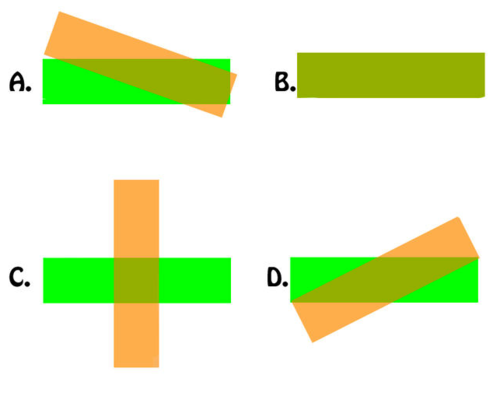Understanding capacitors
 Two plates of equal and opposite charge are set into the configurations above. Choose the configuration of the plates that will produce the maximum capacity with the greatest capacity to store energy. The vertical separation between plates is same in all cases .
Two plates of equal and opposite charge are set into the configurations above. Choose the configuration of the plates that will produce the maximum capacity with the greatest capacity to store energy. The vertical separation between plates is same in all cases .
This section requires Javascript.
You are seeing this because something didn't load right. We suggest you, (a) try
refreshing the page, (b) enabling javascript if it is disabled on your browser and,
finally, (c)
loading the
non-javascript version of this page
. We're sorry about the hassle.
First, recall that capacitance is simply the charge imbalance one must produce between two conductors to achieve a potential difference of one Volt between them. Because excess charge must be spread evenly across surface of a conductor, the capacitance C a pure function of the geometry of the two conductors.
Consider the case when we have one of the plates in isolation, and give it some charge Q . The charge distributes itself around the surface so that the net force on each particle is zero. If any given charge were to deviate a small distance from its position in this arrangement, other charges would quickly start to flow until the net force on each particle went back to zero. Thus, charges on the conductor's surface feel a strong pressure not to get closer to one another.
Now, consider the case where we bring two plates next to each other such that they form a cross as in C. In this arrangement, the charges in the region of overlap interact and generate a field of strength roughly equal to E ≈ 4 π ε 0 1 d 2 2 σ Δ A where d is the distance of separation, σ is the local charge density on the surface in the region of overlap, and Δ A is the area of the surface patch.
If it were possible to bring all the charge in each plates into the region of overlap, we could generate a large voltage between the two plates locally, but this is not possible since the local repulsion between the positive and negative charges within each place tends to spread charge all along the plates. Thus, the charge in the region of overlap has a small separation, generates a large field, thus a large voltage. However, the charge elsewhere in the plates is separated from charges in the other plate by a large distance, thus, outside the region of the interaction, the field and voltage is much smaller.